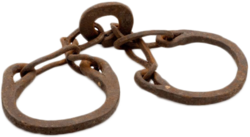
Back تعويضات الاستعباد Arabic Reparaciones por la esclavitud Spanish Réparations pour esclavage French Reparacje za niewolnictwo Polish Reparação histórica Portuguese
| Part of a series on |
| Forced labour and slavery |
|---|
 |
Reparations for slavery applies the United Nations reparations framework to the human rights violations of U.S. chattel slavery and its legacies for victims of slavery and/or their descendants. There are concepts for reparations in legal philosophy and reparations in transitional justice. Reparations can take many forms, including practical and financial assistance to the descendants of enslaved people, acknowledgements or apologies to peoples or nations negatively affected by slavery, or honouring the memories of people who were enslaved by naming things after them. "Victims of slavery" can refer to past slavery or ongoing slavery in the 21st century.
As defined by the United Nations, "reparations" refers to measures by the government to repair violations of human rights by providing a range of material and symbolic benefits to victims or their families as well as affected communities and society as a whole. The UN names these necessary components for something to qualify as reparations: restitution, compensation, rehabilitation and satisfaction.
Some reparations for slavery date back to the 18th century in North America, but the groundswell for such actions has gathered momentum in the 21st century, with both governments and individuals in the United Kingdom, the United States, and European colonial powers taking various actions.